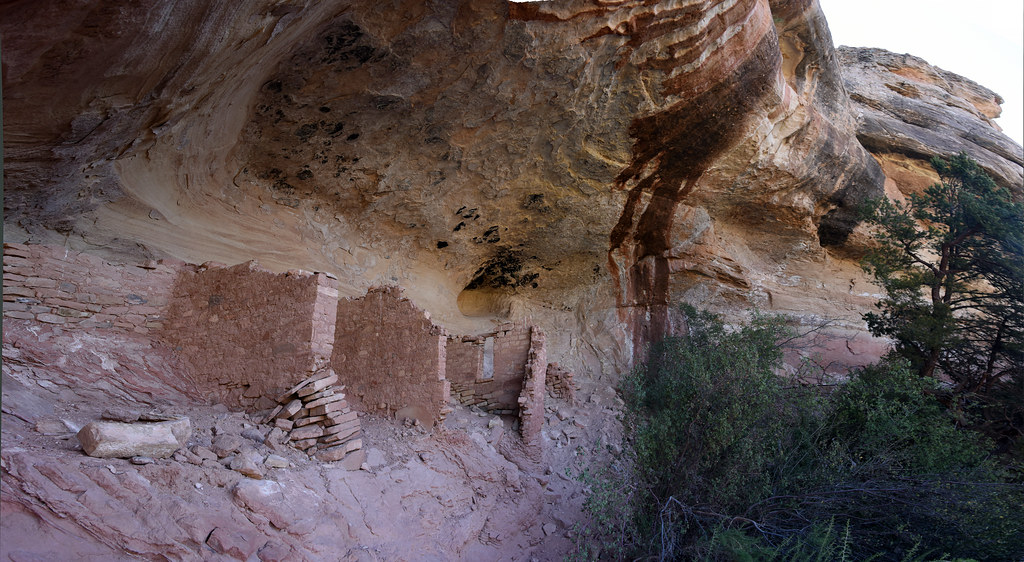#AncestralPuebloan
Text
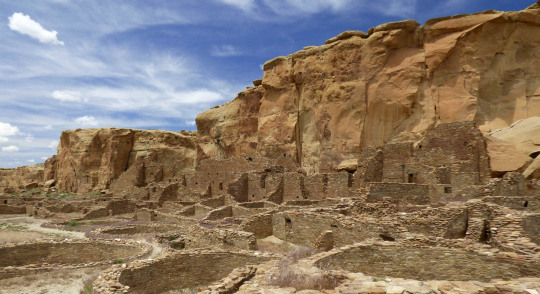

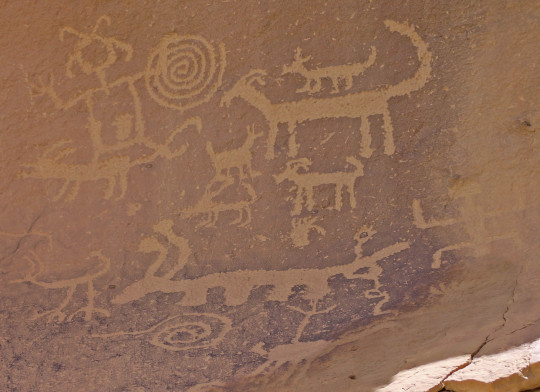


Chaco Canyon is one of the most inaccessible National Parks in the country. Although it is well-known, there is no easy way to get there and there are no amenities once you arrive. The closest town is 60 miles away. There’s a gas station on the main road, near where you turn off on Highway 550. That’s the last opportunity for gas, water, snacks, sunscreen and supplies.
Furthermore, there is no good road to Chaco Canyon. Bluntly, it feels like an Indiana Jones expedition the moment you turn off the main road. The jolting journey evolves from a deceivingly decent dirt road to not so good to face rattling off your skull for a couple of miles. Also, there's a large wash on the way, which can become impassable during heavy storms. Don’t be daring, because there’s no cell phone reception either.
#Native American#New Mexico#roadtrip#NativeAmerican#history#heritage#tradition#culture#daytrip#virtualtravel#instatravel#travelgram#NewMexico#historygeek#offthebeatentrack#leavenotrace#joltyourjourney#earthshotz#AncestralPuebloan#ChacoCanyon#indigenous#archaeology#anthropology#instagramersnm#igersnm
68 notes
·
View notes
Text

#BoycottBlackFriday
#NewMexico
#LosAlamos
#FrijolesCanyon
#BandelierNationalMonument
@BandelierNPS
#AncestralPuebloan
#AncientDwellings
#BriceDailyPhoto
#BoycottBlackFriday#NewMexico#LosAlamos#FrijolesCanyon#BandelierNationalMonument#@BandelierNPS#AncestralPuebloan#AncientDwellings#BriceDailyPhoto
0 notes
Video
Canyon of the Ancients by Richard Ellis
Via Flickr:
Cliff dwelling ruins at Canyon of the Ancients #CanyonOfTheAncients #AncestralPuebloans #Anasazi #CliffDewelling
1 note
·
View note
Photo
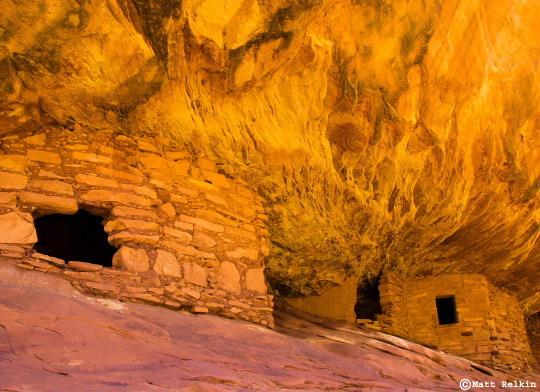
HOF Dwelling, San Juan County, UT
22 notes
·
View notes
Photo

!!!
***
Reposted from @_medievalart These turkey gobble up a centipede on a brilliant example of Mimbres pottery from New Mexico, about 1000-1150.
#mimbres #mimbrespottery #ancestralpuebolans #ancestralpuebloan #globalmedieval #globalmiddleages #thanksgiving #turkey #🦃
#mimbres#mimbrespottery#ancestralpuebolans#ancestralpuebloan#globalmedieval#globalmiddleages#thanksgiving#turkey#🦃
8 notes
·
View notes
Text


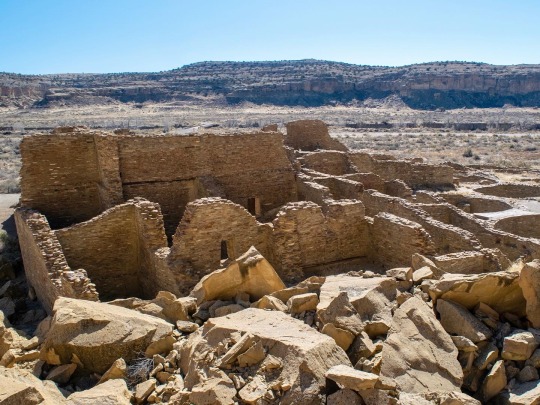
Chaco Canyon, New Mexico | Fall 2019
by Lily Camara
#chacocanyon#new mexico#ancestralpuebloan#pueblo#highdesert#pueblobonito#desert#chacoculture#nageezi
6 notes
·
View notes
Photo

Discovery Waypoint | N 37° 11′ 1.62″ W 108° 29′ 19.27″ View the full image and discover its story, follow the link below to Following My GPS Photography (FMGPhoto.com)... . . https://www.fmgphoto.com/Travel/Travel/i-vZtmXBr . . . #mesaverde #mesaverdenationalpark #nationalpark #CliffPalace #UNESCO #unescoworldheritage #Colorado #Puebloan #archaeological #archaeology #cliffdwellings #ancestralpuebloan #discoveramerica #travelpics #travellife #travelinspiration #travelblog #travelphotography #fmgphoto #followingmygps #travelphotography #traveller #photography #travelamerica #lifestyle #LifeWellLived #travelmagazine #roadtripping #exploring #roadtrip (at Mesa Verde National Park) https://www.instagram.com/p/CQbMcfmMjzT/?utm_medium=tumblr
#mesaverde#mesaverdenationalpark#nationalpark#cliffpalace#unesco#unescoworldheritage#colorado#puebloan#archaeological#archaeology#cliffdwellings#ancestralpuebloan#discoveramerica#travelpics#travellife#travelinspiration#travelblog#travelphotography#fmgphoto#followingmygps#traveller#photography#travelamerica#lifestyle#lifewelllived#travelmagazine#roadtripping#exploring#roadtrip
0 notes
Photo

The ancient portals of Aztec Ruins are like stepping through the looking glass into the past #aztecruins #nationalmonument #newmexico #ancestralpuebloan #ancient #arcitecture #portals #archaeology #travel #wanderingout #lostwithwilliam #roadtrip (at Aztec Ruins National Monument) https://www.instagram.com/p/CNLsD3fB5mG/?igshid=mluakplvrevu
#aztecruins#nationalmonument#newmexico#ancestralpuebloan#ancient#arcitecture#portals#archaeology#travel#wanderingout#lostwithwilliam#roadtrip
0 notes
Photo

Fridays need a bit of color every now and then. Ancestral Puebloan inspired weavings. . . #MojaveNationalPreserve #CA #AncestralPuebloan #Weaving #TT50 #Trailto50 (at Mojave National Preserve) https://www.instagram.com/p/B8kGxqIHNzn/?igshid=9vovur0csjrq
0 notes
Photo
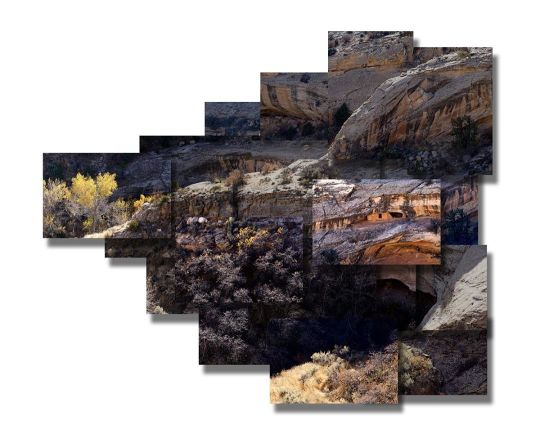
Ruins at Natural Bridges NP. #experimentalphotography #photosculpturebylowrie #utah #naturalbridgesnationalmonument #ancestralpuebloan https://www.instagram.com/p/B5GKNUhJRxC/?igshid=16g2ho1thzdl4
#experimentalphotography#photosculpturebylowrie#utah#naturalbridgesnationalmonument#ancestralpuebloan
0 notes
Photo

My good pal Petuuche, historían of the Acoma pueblo outside of Albuquerque, NM . . . #indigenouspeoplesday #acoma #acomapueblo #nativeamerican #nativeamericanculture #firstnations #firstnation #firstnationspeople #ancestralwisdom #ancestralpueblopeople #ancestralpuebloan #spirit #spiritualawakening #coyote #bear #eagle #animalspirits #hybridvigor #spiritualjourney #nomads #weareONE #inTheI #ZenLove #om #yogaeverywhereigo https://www.instagram.com/p/B4dhwVHpMz0/?igshid=efweoxk6n04l
#indigenouspeoplesday#acoma#acomapueblo#nativeamerican#nativeamericanculture#firstnations#firstnation#firstnationspeople#ancestralwisdom#ancestralpueblopeople#ancestralpuebloan#spirit#spiritualawakening#coyote#bear#eagle#animalspirits#hybridvigor#spiritualjourney#nomads#weareone#inthei#zenlove#om#yogaeverywhereigo
0 notes
Text



Aztec Ruins National Monument is in the Animas Valley, about 15 miles south of the Colorado border on US-550. The monument encompasses several distinct ruins; Aztec West, Aztec East, Earl Morris Ruin, the Hubbard Tri-wall structure, several unexcavated mounds on the east side of the site, and a large community of sites on the terrace north of the main ruin. Several of these areas are off-limits; however, the Hubbard site and Aztec West are open to the public.
The West Ruin was excavated in the early 1900s. It had at least 450 interconnected rooms built around a large, open plaza. The massive sandstone walls are over 30 feet tall and the north wall of the ruin is over 360-feet long. In total, there are twenty kivas and a Great Kiva. Archaeologists estimate that 200-300 people lived there.
The Hubbard site was partially excavated in the 1920s. It is one of very few tri-walled buildings in the Southwestern United States. The round structure resembles a kiva, but it was built with three concentric circular walls, separated by interior walls, which creates 22 rooms surrounding the central kiva.
#New Mexico#roadtrip#NativeAmerican#history#heritage#tradition#culture#daytrip#NewMexico#historygeek#offthebeatentrack#Aztec#indigenous#archaeology#anthropology#AncestralPuebloan
17 notes
·
View notes
Photo
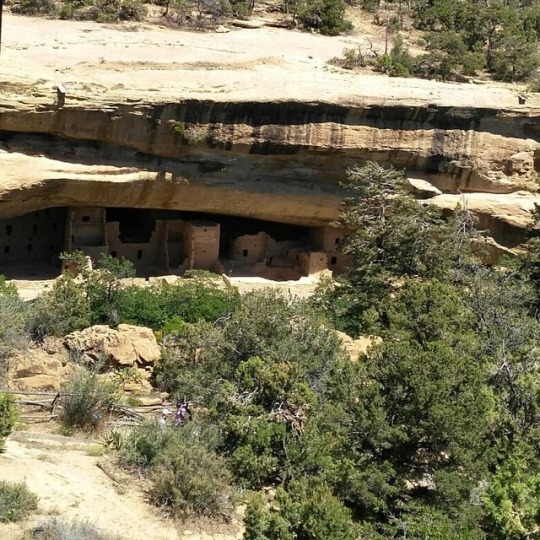
<>÷• Mesa Verde National Park •÷<> ~• Home of the Ancestral Puebloan People •~ Circa 600-800 AD #Nofilter #mesaverde #colorado #puebloan #mesaverdecolorado #ancient #native #ancestralpuebloan #usa #america #history #ancestralhistory #ruins #city https://www.instagram.com/p/Bzj7T1fAomZ/?igshid=897d24nxsyyc
#nofilter#mesaverde#colorado#puebloan#mesaverdecolorado#ancient#native#ancestralpuebloan#usa#america#history#ancestralhistory#ruins#city
0 notes
Text
Day Five -- A long-held goal realized: Mesa Verde
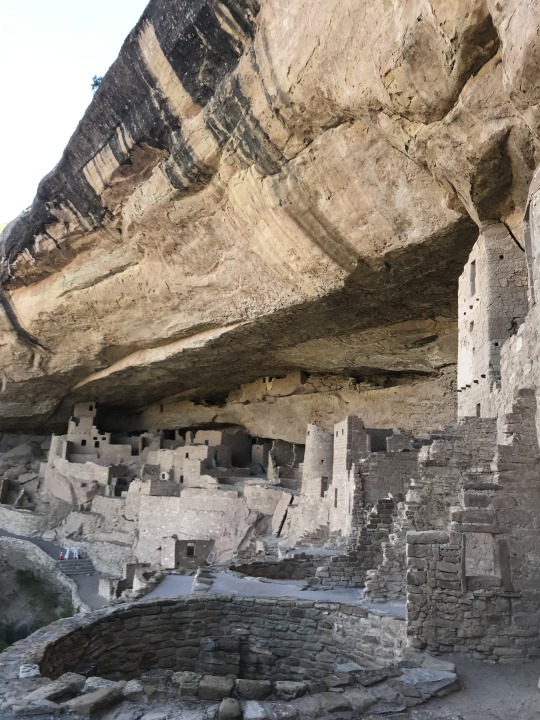
Up close and personal -- my first view of Cliff Palace
I’m up early, hoping to arrive at the park as soon as it opens at 8 AM. After luxuriating in my hot tub last night, I washed out a few items and hung them to dry. I am now shocked to find that all of these items dried overnight. It would take two or maybe three days for them to dry under similar circumstances in Seattle. I cleverly deduce that this area must be very dry indeed. (Continue reading below.)
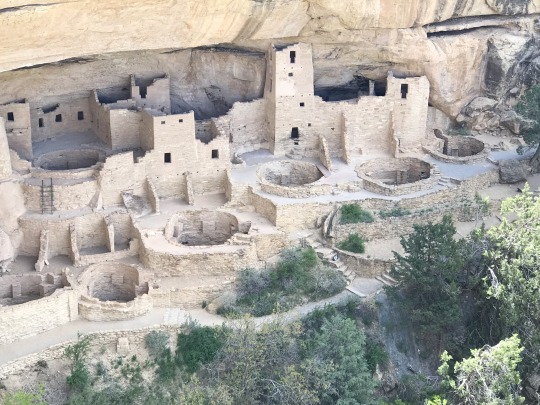
Cliff Palace from an overlook
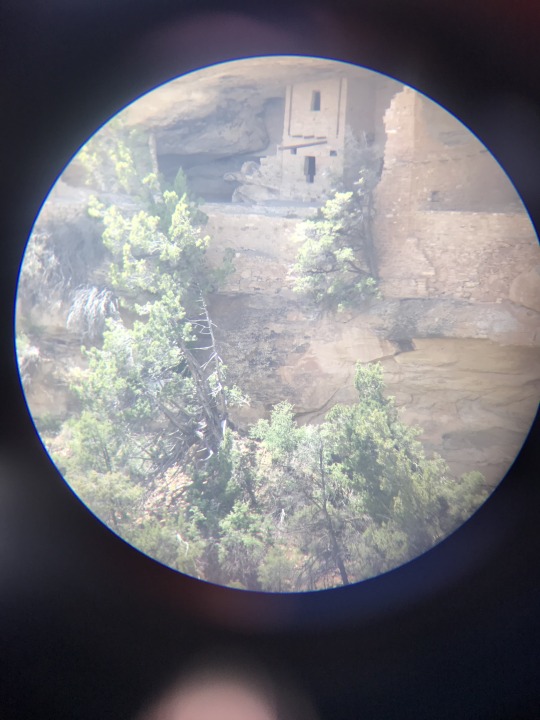
Balcony House through a telescope
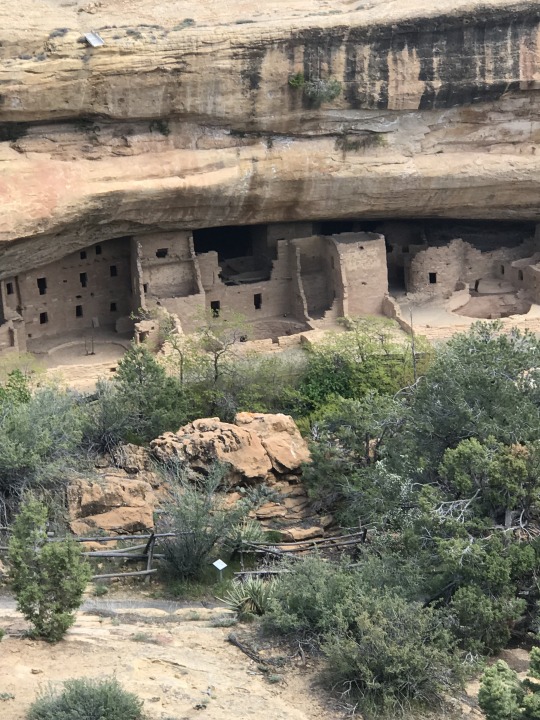
Spruce Tree House
DAY FIVE -- A long-held goal realized: Mesa Verde
I eat a quick bowl of oatmeal at Holiday Inn’s free breakfast and head out into a lovely sunny morning. I’ve wanted to visit Mesa Verde for more than 20 years and intend to devote this entire day to it. The last time I drove through here on my way to visit my sister and her new twin girls (who are about to turn 21, OMG) I didn’t plan well enough and didn’t have time to tour the park, for which you need a minimum of three hours to see anything at all. I now plan to make up for that omission.
I stop at the Park Entrance Station where I get in a short line to buy a ticket for a ranger-led tour. There are three tours listed: Cliff Palace, Balcony House and Long House, however today only the Cliff Palace tour is available. Signs warn that the tour of Cliff Palace is very strenuous so I fret while waiting in line, worried that the tour might be more than I can handle. When it’s my turn to talk to the ranger selling tickets, I ask for more details about the tour. She tells me I will have to negotiate 4 ten-foot ladders and walk over uneven and rocky ground. I reason (under my breath) that if I managed to climb to the top of St. Paul’s Cathedral only six months ago, I should be able to manage this.
So you want a ticket? Yes, please. I expect it to be expensive, but the price is just $5.00. When I express surprise at the minimal fee, the ranger says, if you want to spend big money you can buy a tour from the private company that contracts out for us. She jerks her head in the direction of a desk manned by someone who does not appear to be a ranger. I consider this option briefly, but per the sign these tours are long (nine hours!) and involve being driven around the park in a huge bus (I hate being a captive audience) so I decide to explore the rest of the park on my own after seeing the Cliff Palace.
My tour is scheduled for 10:00 AM. After selling me a ticket, the ranger says I have plenty of time to get there as long as I don’t dawdle – it’s an hour-long drive to the top of the mesa. She gives me a map and marks the spot where the tour will begin. An hour! Yikes. I skip the exhibits and head out to my car.
At the park entrance, I point to the senior pass hanging from my rear-view mirror and ask the ranger if she needs anything else. At Canyonlands I was waved through on the strength of this pass, but at Mesa Verde I have to show an ID and submit my pass for close scrutiny. I suppose this is an indication of how popular this park is – nothing is taken for granted.
To get to the heart of the park, I now follow a road that winds 1500 feet up the side of the mesa. The elevation in Cortez is 6200 feet; now I will be climbing to over 8000. The road to the top of the mesa must be taken slowly as it is very narrow with hairpin turns. (For the first years of the park’s existence, this was a graded dirt, one-way road. Before a vehicle started up the road to the top of the mesa, a telephone call (from a phone box at the bottom) made sure no one was on their way down, then all downwards traffic was held until the caller arrived at the top. (I learned this fascinating fact by reading a book called “Our Trip to Mesa Verde 1922” that I purchased in the gift shop later.)
I drive straight to the meeting spot for the tour and am the first to arrive. Due to a recent rockfall that has closed the usual entrance, our tour will enter Cliff Palace at the same place we exit. Soon there are several of us waiting for the ranger to show up. I strike up a conversation with a couple of women who appear to be about my age and mention the fact that I am traveling alone. They are suitably impressed. I show off a little: travel when you want, where you want, I say, and they nod appreciatively. I briefly sketch out my route and mention that I stopped to see the Great Salt Lake. They want to know what I thought of it. The question feels loaded so I hedge a bit. Well it seemed quite nice this time, but my last visit wasn’t quite as positive. (Trying to say both that I liked it and also that I didn’t, so I can take my cue from their reaction. But I never quite decide what they think of the lake or why they asked. I get a sense that they might live near Salt Lake and are not terribly impressed.)
They ask if I have any sunscreen, so I get some out of my car. Then I ask if they have any ibuprofen as the headache I woke up with is unrelenting. They do. It’s a good trade and there are smiles all round. These brief friendly encounters are one of the best parts of travel. (I realize later that I was probably suffering from low-grade altitude sickness during my stay in Cortez and Mesa Verde. In spite of taking ibuprofen the headache stayed with me the entire day.)
Our tour guide shows up. At exactly 10 o’clock she leads us down a short trail to the ladders. She tells us we will go down one by one and after descending we are to follow the path to the right and join her near the ruins where we will wait for everyone to climb down and join us. There are four 10-foot ladders made out of rounded, bark-free, tourist-worn tree trunks about six inches in width and a yard long which although precipitous are fairly easy to negotiate. I make the mistake of taking my walking sticks with me (because we were warned that we would have to traverse uneven ground) and they make my descent much clumsier, clanking against the rungs of the ladder and even getting caught up behind them. I have to move carefully and make sure every step is secure and the sticks make it difficult as it seems I am untangling them constantly. Even with these issues, I’m not the slowest by any means, which is a relief. (Several are slower including a woman with acrophobia who takes so long to descend and needs so much help the ranger has to start the tour without her.)
After successfully negotiating the ladders I follow a well-worn trail around the rock face and suddenly the Cliff Palace ruins are before me – a sandstone city of towers, living and storage rooms, kivas and open work areas. It looks just like the photos I’ve studied and for some reason this seems incredible – a long-treasured wish suddenly coming true. After years of wanting to see this site now it’s right in front of me and I’m overwhelmed.
I find it impossible to see these structures and not also feel intrigued by the mysteries that can never be answered. Why did these ancient people move from the top of the mesa where they had lived from AD 550 to AD 1200 and down into the cliffs? Why did they suddenly abandon the cliff dwellings in AD 1300, leaving behind many prized possessions such as mats, ceramic vessels and stores of food? There are many theories, but it is impossible to answer these questions definitively. What an enigmatic and evocative place.
Our ranger is knowledgeable and enthusiastic. She tells us that Mesa Verde has been a national park since 1906 and that it was the first park established to protect cultural and archaeological treasures rather than natural wonders. The archaeological sites needed protection as they were increasingly being plundered by travelers and explorers. Even the man given credit for discovering the ruins – Richard Wetherill—is considered by some to be more plunderer than archaeologist.
The ruins are empty now, their contents scattered across the country in museums. It seems a shame that it isn’t possible to see the pottery and other artifacts in the place they originated. I promise myself that I will visit some of these museums in the near future, to get a better feel for the people who lived here.
But at least the ruins remain. Our guide tells us that Cliff Palace contains 150 rooms, 75 open areas, and 21 kivas. There are both round and square towers and many storage rooms and granaries. She shares some of the theories about the use of Cliff Palace – some believe it was a residence for several families, some believe it was largely a ceremonial site with a few people caring for it and living in residence. Some believe it was used strategically during conflict. When she talks about the reason the inhabitants abandoned these dwellings, she discusses factors that may have contributed to their decision – several years of drought in the years immediately before their departure, for instance. She concludes by saying she believes they moved on because, based on their culture and beliefs, it was simply time to go.
Although our guide has a wealth of knowledge about Mesa Verde and the people who lived here, (she tells us she has worked as an archaeologist in this area for years) she is too matter of fact for my liking. I long to hear someone speculate about the past and weave stories about the people who used to be called the Anasazi. (Researchers and archaeologists stopped using this term when they realized it was a Navajo word meaning ancient enemy.) The current and more accurate name for the people who lived in Mesa Verde is Ancestral Puebloans.
The tour ends and we now have to climb back up the ladders. It’s considerably harder than climbing down, even worse than I anticipated. I stop between each section of ladder and try to briefly catch my breath—briefly, because I don’t want to be obviously incapable – which has more to do with pride than anything else. There is no question that the altitude is affecting me, especially while climbing these four ten-foot ladders. When I get to the top I’m gasping, heart racing, and wishing I’d thought to bring along my inhaler, which I rarely need but could really use now.
There are several benches at the top of the ladders – placed strategically for tourists who need to stop and catch their breath. I’m surprised to see that it’s not only we older folks who need to rest after the climb—people 30 years younger than me are panting and gasping as well. The unfortunate woman with acrophobia is nowhere to be seen.
I return to my car, with plans to drive around the top of the mesa and see as much of the park as is possible in a day of touring. There is so much more to see – the park contains 5000 archeological sites, including 600 cliff dwellings. Of course, only a small fraction of these are available to tour – but even so, there is far more than can be seen in one day: Spruce Tree House, Fire House Ruins, Square Tower House Overlook, Oak Tree House Ruins, Sunset House, Balcony House, Mesa Top, Long House, Step House – the list goes on and on. I do my best and drive to as many of these as I can. One of the highlights of Mesa Verde is Balcony House, so I walk out about ¾ of a mile to a spot where you can view it from across a canyon. There is a telescope you can train on the site for a closer look and I manage to take a photograph through this telescope. (The round photo above.)
I also check out the Mesa Top ruins, where the Ancestral Puebloans lived hundreds of years longer than they lived in the cliff dwellings, and drive both the Cliff Palace and Mesa Top Loops, stopping frequently to walk to overlooks and examine excavated ruins.
It is late in the afternoon when I make it to the Chapin Mesa Archaeological Museum. Spruce Tree House Overlook is nearby and there is a lovely paved path on which you can walk down for a closer look but by this point I am so exhausted I don’t feel able to walk even this short distance. (For someone who can only manage a flying visit, this is definitely the place to go – The Spruce Tree House is an impressive site and easy to get to, plus it is within walking distance of a café, museum and bookstore. If you were pressed for time you could hit just this one area of the park.)
Although feeling very tired I manage to visit the bookstore, where I overdo it as usual and buy four (!) books about Mesa Verde because I am still longing for more – I want something I can take with me and savor after this day is over. Also, I hope the books will satisfy some of the curiosity I still feel about the people who lived here and their fate.
One of the books is simply for fun: a Nevada Barr mystery (this is a fun series with a female protagonist who is a ranger who moves from national park to national park, solving a different mystery in each. I had read the mystery set in Mesa Verde many years earlier – (so long ago I could no longer remember who-done-it.) It was fun to reread and this time around be able to recognize many of the landmarks and know that I had actually set foot in many of them!)
I also buy a very short tract written by three young women who visited the park in 1920 (they walked to Mesa Verde from their homes in Colorado), another book based on interviews with Marietta Wetherill, wife of Richard who excavated extensively here and in Chaco Canyon. My fourth book ends up being the best of the lot – I buy it because it appears to be a book that will satisfy my craving for more detailed information about the people who lived here -- a book that will bring those early days to life and provide answers or at least speculation about their lives and motivations: “House of Rain” by Craig Childs. The research and effort that went into his book is astounding. What a luxury to have someone do extensive research (including many long walks across the desert), interview archaeologists and scientists, and pull together all of these many threads of knowledge into a cohesive whole. Even better, Childs can write like a dream—the kind of writing you just fall into. I highly recommend it.
In addition to these books I buy souvenirs for myself and family, then head over to the cafe and grab a late lunch. By this point I’ve reached the end of my endurance and am ready to head back to my hot tub. I’ve seen a lot, and even though I can’t see everything (I don’t make it to the Wetherill Mesa, where Step House and Long House are located), I have finally satisfied some of my curiosity about Mesa Verde. I drive down off the mesa and return to my motel room, so exhausted I don’t have the energy to walk across the parking lot for a meal.
But all I saw and experienced today makes the extreme exhaustion worth it. I am as pleased with my efforts as I would be if I ran a marathon or hiked a mountain – the exhaustion is just a symptom of having explored and learned to the utmost. And the things I did and saw today couldn’t be a more perfect match for my personal interests and inclinations – beautiful scenery, fascinating ruins, and enough information to imagine how life was lived hundreds of years ago. I loved every minute of it.
4 notes
·
View notes
Photo



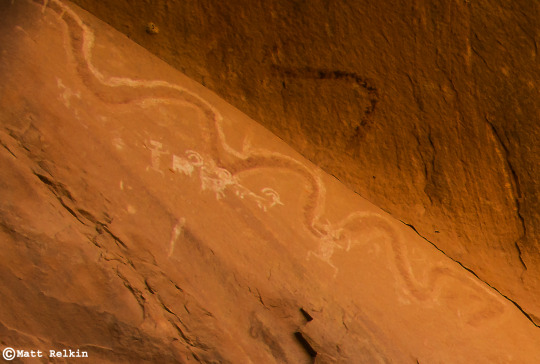
RH Ruin, Bears Ears National Monument, UT.
An Ancestral Puebloan dwelling along the San Juan River, occupied between 900-late 1200′s.
374 notes
·
View notes
Photo
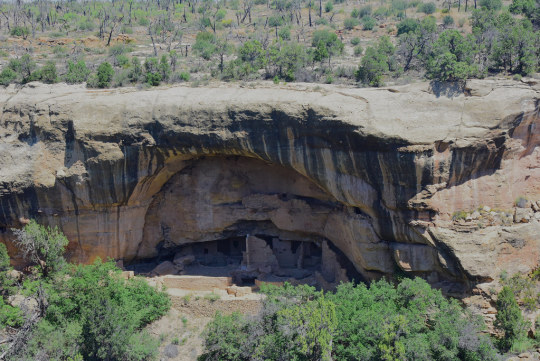
Mesa Verde National Park, Colorado, US 907 by tango- Mesa Verde National Park is an American national park and UNESCO World Heritage Site located in Montezuma County, Colorado. The park protects some of the best-preserved Ancestral Puebloan archaeological sites in the United States. https://flic.kr/p/2ko5Yyy
0 notes
